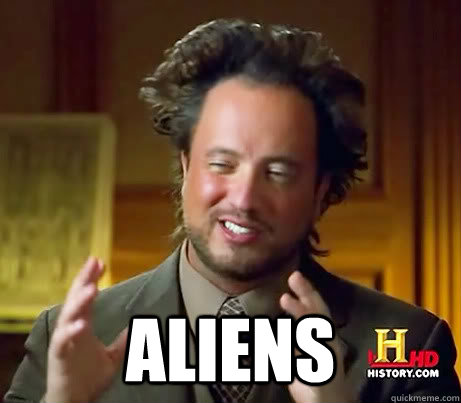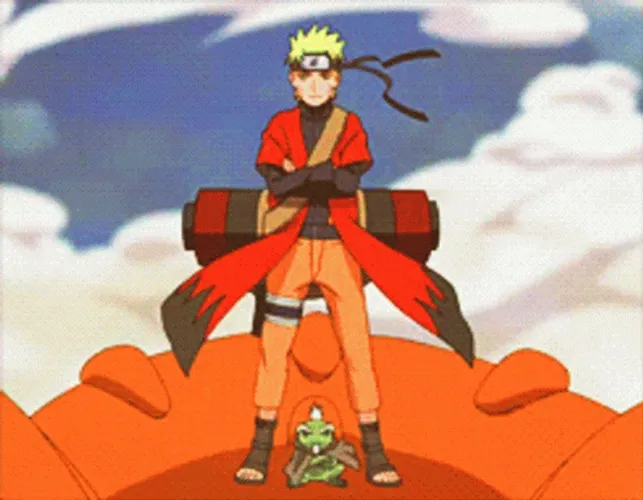Science OT: Way Cool "Close" Star Has SEVEN Earth-Type Planets!!!
Even Hollywood never dared dream this up: NASA today announced that a star "only" 39 lightyears from Earth has 7 planets closely orbiting it -- and each of the planets is 75% to 110% the size of Earth, and at least six of them are "rocky" (hard surfaces like Earth). And at least 3 of them are in the "habitable" zone, meaning, they are at the right distance from the star where the heat from the star keeps water warm enough not to freeze and cool enough not to boil off.
http://www.space.com/35790-seven-earth-size-planets-trappist-1-discover…
There are some weird things about this system. The star is barely bigger than Jupitor, and a thousand times less hot than our Sun. So the 7 planets are all orbiting extremely close; one completes a full orbit in 1.5 days. And the planets are "tidally locked," so each keeps the same face to the star (meaning, each one rotates on its axis at the same rate it orbits the star) -- which is exactly what our Moon does with the Earth. This will cause the star-facing side to be much hotter than the other side, but an atmosphere and/or an ocean can distribute the heat (and there will be a very comfortable zone right at the horizon of where the star-facing side meets the other side).
You can bet NASA and scientists will be training telescopes on this system for years to come. We eventually will figure out which of those planets has an atmosphere, and what gases make up that air. We probably will even figure out mean surface temperatures, and perhaps if any have flowing water. Detecting life at this distance is hard to imagine. If the planets had seasons, you in theory could see changing colors on their surfaces (like forests of trees growing leaves) -- but tidally-locked planets won't have seasons, and given how fast these planets orbit that star, their seasons would only be hours or days long anyway.
A robotic or manned mission to this star will remain science fiction for now. While incedibly close by galactic standards (that star is only 0.13% the distance from the Sun to the middle of the galaxy and Sag A*, the supermassive black hole in it), even our fastest-conceivable small robot would need thousands of years to get there at current technologies.
February 22nd, 2017 at 3:11 PM ^
...way OT, it is far more interesting than anything about Paul (Pete?) Finebaum. In a just world maybe we could send Finebaum to check this out.
February 22nd, 2017 at 7:21 PM ^
February 22nd, 2017 at 2:20 PM ^
are you saying that Event Horizon was a true story?
February 22nd, 2017 at 2:25 PM ^
No, but I'd say it was a terrible movie.
February 22nd, 2017 at 2:28 PM ^
was cheesy, pulpy, campy, and so very very awesome.
February 22nd, 2017 at 5:47 PM ^
February 22nd, 2017 at 2:36 PM ^
You spelled Jupiter wrong brah
February 22nd, 2017 at 2:22 PM ^
February 22nd, 2017 at 2:25 PM ^
Bill Nye is that you?
February 22nd, 2017 at 2:26 PM ^
The weather in the twilight zone of one of these planets must be pretty insane. All of that convection concentrated into little areas. Would make for some great geothermal energy opportunities though.
February 22nd, 2017 at 2:34 PM ^
is a hot take
February 22nd, 2017 at 2:35 PM ^
I'm ignorant about weather. What would create a great deal of convection in this case? You have the same area of the planet being heated by the sun at all times. Wouldn't it just be a static temperature profile? Unless you have a lot of vapor condensing on the dark side and flowing back to the light side to evaporate again?
February 22nd, 2017 at 3:18 PM ^
The wind would be bonkers. Simplistically, wind is just air moving from high to low pressure areas. Cold air is denser and therefore higher pressure. Sea breezes form in the afternoon and evening when the land, which has heated up faster during the day, is warmer than the water next to it, and shore breezes will form in the morning because the land has cooled off faster, absent any other weather patterns. On a macro scale, with a tidally locked planet, chances are the wind would blow furiously from the night side to the day side, then rise upwards and blow equally furiously the other way at high altitudes. This depends on the characteristics of the atmosphere, of course. But the "habitable twilight zone" would be forever subject to screaming winds.
February 22nd, 2017 at 3:27 PM ^
This is what makes this site so great. Thanks for the explanation.
February 22nd, 2017 at 3:38 PM ^
Of course this makes perfect sense and I feel silly for not realizing that. I blame severe sleep deprivation (my 6 month old son does not sleep).
February 22nd, 2017 at 3:48 PM ^
Then shouldn't your son be sleep deprived? /s
February 22nd, 2017 at 3:52 PM ^
Does all this comply with flat planets?
February 22nd, 2017 at 5:00 PM ^
Did you by chance stay at a Holiday Inn last night?
/s
February 23rd, 2017 at 9:34 AM ^
It's just that when one's hobby is sailboat racing, one picks up on a basic idea of how wind behaves. Or else one loses more often than not. I'm not a meteorologist or anything.
February 22nd, 2017 at 3:23 PM ^
I confess I'm not an expert either, but here is what I have gleaned from years of watching the weather channel and science shows.
Where the light side meets the dark side, there would be a huge temperature gradient, like a severe cold front on Earth, except it would be pretty much in the same place every day. So you would have pretty much endless storms in a north-south ring around the planet where light meets dark.
February 22nd, 2017 at 3:23 PM ^
I confess I'm not an expert either, but here is what I have gleaned from years of watching the weather channel and science shows.
Where the light side meets the dark side, there would be a huge temperature gradient, like a severe cold front on Earth, except it would be pretty much in the same place every day. So you would have pretty much endless storms in a north-south ring around the planet where light meets dark.
February 22nd, 2017 at 4:27 PM ^
February 22nd, 2017 at 2:26 PM ^
I'll be back for Christmas
February 22nd, 2017 at 2:28 PM ^
lol, nasa.
February 22nd, 2017 at 2:29 PM ^
Like Intersteller, we should send a team to see which planet is habitable so we can plan for the continuation of human life. Necessary since earth is likely to be blasted by a massive meteor called Apophis, potentially causing an extinction level event in 2029. Per Neil Degrasse Tyson.
February 22nd, 2017 at 2:40 PM ^
That would mean the next 12 years are prime for coke and hookers?
February 22nd, 2017 at 2:55 PM ^
I just ran the numbers. This checks out.

February 22nd, 2017 at 5:10 PM ^
But it damn sure smells good!
MadHatter approves this message.
February 22nd, 2017 at 2:46 PM ^
Of all time. I don't remember a time when I was impacted more when the crew returned from the water planet.
February 22nd, 2017 at 3:14 PM ^
That is such a great film and yes, that part is so tense. The fact that they were racing a giant wave and very fast clock was so great.
February 22nd, 2017 at 3:25 PM ^
I don't care about much else; I just know that NASA NEEDS to make a real-life Case and Tars happen.

February 22nd, 2017 at 3:15 PM ^
But Matt Damon will foil this plan by lying to get off of Hoth to avoid darth vader. This, of course is after the crew picks up a ship with an alien that latches on to their face releasing its offspring into their stomachs.
February 22nd, 2017 at 5:20 PM ^
Matt Damon!
February 22nd, 2017 at 10:33 PM ^
a retouch job.

February 22nd, 2017 at 3:21 PM ^
https://en.wikipedia.org/wiki/99942_Apophis
So I was curious about this after you posted and checked wikipedia. Per updated calculations, the odds are now 1:256,000 that it impacts on the 12th of April, 2068.
February 22nd, 2017 at 3:52 PM ^
Shit. I was really hoping this would happen sooner rather than later.
February 22nd, 2017 at 8:38 PM ^
That would be a trip, the world as we know it ending on my birthday.
"Lemme blow out the candles...No, let's let the asteroid do it...
February 22nd, 2017 at 4:32 PM ^
Upon its discovery in 2004, Apophis was briefly estimated to have a 2.7% chance of impacting the Earth in 2029. Additional measurements later showed there was no impact risk at that time from the 210-330 meter (690-1080 foot) diameter object, identified spectroscopically as an Sq type similar to LL chondritic meteorites. However, there will be a historically close approach to the Earth, estimated to be a 1 in 800 year event (on average, for an object of that size).
The analysis of Apophis previews situations likely to be encountered with NEAs yet to be discovered: a close approach that is not dangerous (like Apophis in 2029) nonetheless close enough to obscure the proximity and the danger of a later approach (like Apophis in 2036) by amplifying trajectory prediction uncertainties caused by difficult-to-observe physical characteristics interacting with solar radiation as well as other factors.
There you go - I am now an expert on something I'd never heard of until 10 minutes ago - so thanks for the warning!
I'll bet in '29 they'll mount an "Armageddon" type intervention while it's close enough to calculate the trajectory needed to avoid a too close/potential impact in '36. By the way, in hitting IMDB to make sure I had the synopsis of "Armageddon" right, I read the plotline:
A Texas sized asteroid is discovered less than a month before impact!!!!
Cumong man! Did they think we was stoopid with that one?!
February 22nd, 2017 at 6:11 PM ^
Armageddon had MORE science errors than any other movie ever, basically, something like 168 basic errors of science. So yes, yes, they did think we were that stupid.
* There was also a LEGAL error. The joke was, the space shuttle had 500,000 parts and was "built by the lowest bidder." Actually, the shuttles would have been build on a "best value" award -- not the lowest bidder, but the bidder with the best value considering technical, management and financial factors. And I'm betting the shuttles only had one bidder anyway (ULA).
February 22nd, 2017 at 5:50 PM ^
February 23rd, 2017 at 3:14 AM ^
show Apophis hitting us. NASA concludes it will miss us by several million miles. The best bet for an asteroid to hit the earth (300 to 1) would be asteroid 1950 DA on March 16, 2880. Even if it misses us it could come as close as the distance of the moon to the earth. If it does hit, mass extirpation of life would occur. Due to its size with a diameter of 1.3 KM, the impact would disperse 10 KM of earth mantel and cause a firestorms through out the globe, then eventually an ice age. I just hope Michigan gets one last national championship during the football season of 2879!
February 23rd, 2017 at 2:58 PM ^
Will Harbaugh still be coach or will the lure of the NFL be too much for him by 2879?
February 22nd, 2017 at 2:29 PM ^
They most likely won't have life. But odds are, one will someday. And I hope it isn't so far away that we can never talk to them, and that we find it soon enough that we make contact during my life...
February 22nd, 2017 at 4:37 PM ^
Well, unless they discover the wormhole they used to travel in "Interstellar," then it'd be thousands of years until we could reach the planets.... so God Bless Ya if you're thinking you'll be around for that.
Or what did you mean by "make contact"? Shoot em a text?
February 22nd, 2017 at 5:23 PM ^
February 23rd, 2017 at 6:29 AM ^



